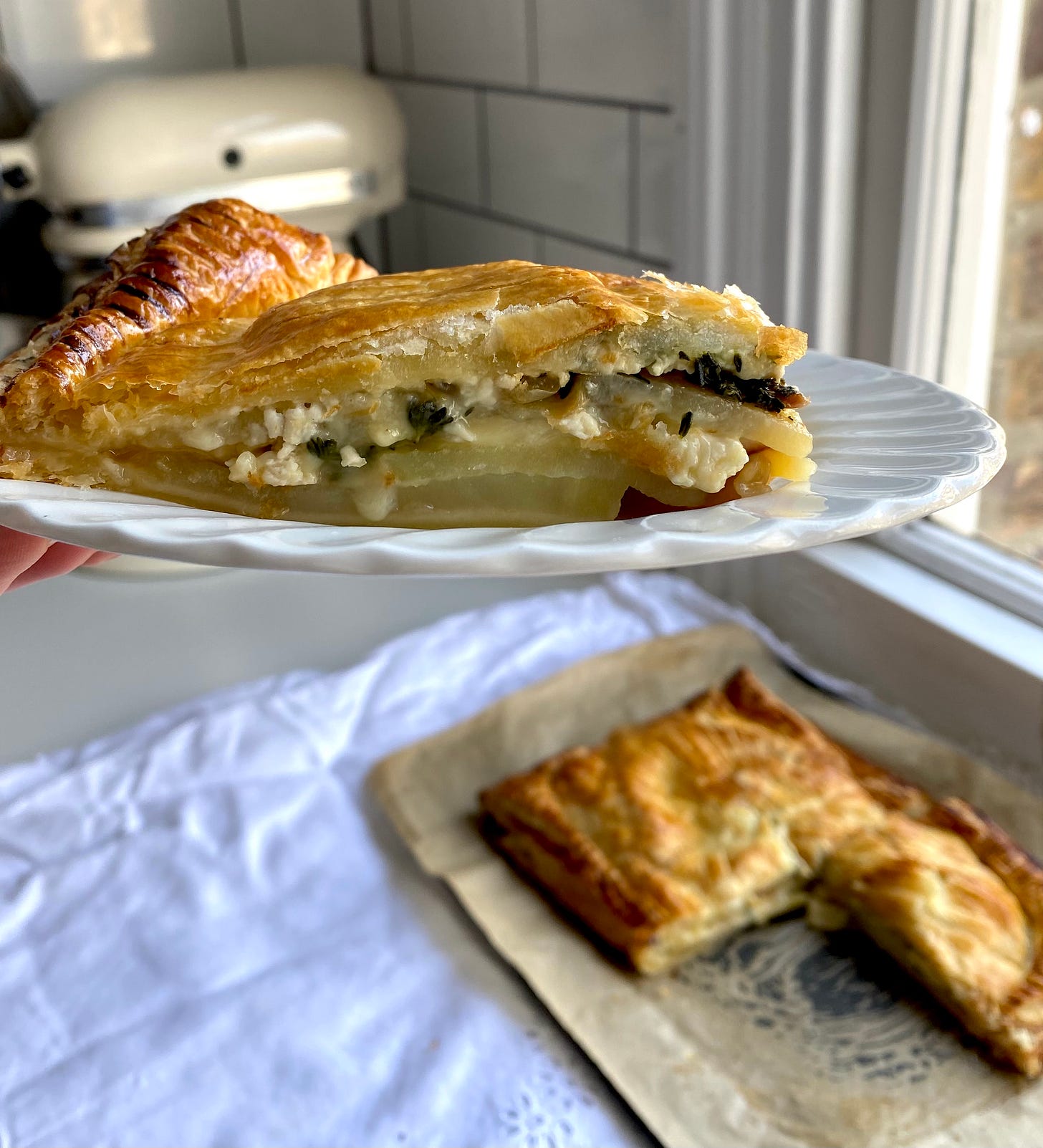Here’s an unpopular opinion which will likely shed me a few subscribers: skiing. is. rubbish!
I know, I know. You love to ski and you hate me for hating it. Most people I know absolutely love it. But my family don’t ski so I never learnt as a kid (*plays tiny violin slowly*) and by the time I finally did strap two metal bars to my feet - and pay a small fortune for the pleasure, I might add - the instinctual sense of danger you acquire as an adult was probably a little too developed to allow me to ‘throw myself into’ (or indeed, down) the mountain as fully as I should have. What can I say, fear of serious injury and embarrassment aside, I felt like I spent most of the holiday getting up the mountain, and that was before the harrowing experience of getting down it.
While the skiing itself wasn’t for me, I did manage to throw myself into the other parts of the holiday. While I lacked any aptitude on skis, I felt like I did a good job at sitting on the chalet balcony in a robe with my morning coffee, in sweating out the sheer bucket loads of cortisol I had acquired on the slopes in the sauna, in wearing brightly coloured salopettes and various different pairs of sunglasses, in cooling a lunchtime bottle of rosé in the snow (so chic!) and - of course - in the cold weather subsistence.
Everyone knows that food tastes better when it fits the innate wants of the eater, and I’ve certainly been to few places that do food to capture the mood as well as ski resorts. We ate exactly the food my body craved in the cold, icy mountains - freshly made stroopwaffles, winey fondues, thick dollops of whipped cream floating in hot chocolates and, of course, tartiflette.
Deeply comforting, tartiflette is a hearty dish of potatoes, cheese, cream and onions. Rich as it is, this dish is evidently designed for cold days - and perhaps that’s why I’ve been craving all of these elements over the past few weeks. London is bright but cold, and the freezing sunshine that spills into my kitchen has taken me back to those days on the slopes of Verbier nearly ten years ago.
As if there weren’t enough carbohydrates in play, I decided to make my version of a tartiflette into a pie. Indulgent, yes, but I promise you won’t regret it. Pillow is a rather sweet name for a sandwiched rectangular pie which is, I’d wager, the easiest type you can make. This is truly the perfect dinner to come home from a long winter walk to; serve it with a lightly dressed leafy salad and perhaps a few cornichons or pickles.
My tartiflette pillow pie
I call this ‘my tartiflette’ because I’ve departed from the source text in several ways. A traditional tartiflette is made with reblochon, which is delicious, but harder to find here in the UK. I’ve used camembert instead, and the results are just as delicious. The original dish also usually features fried bacon lardons and while you could absolutely add those here, I don’t think this pie needs them. Finally, I like to add a little fresh thyme and a healthy slick of jelly or chutney to lift things a little, but these are entirely optional.
A 320g sheet ready-made puff pastry (feel free to make your own, but I don’t!)
1 egg
1 tbsp olive oil
1 medium onion
Salt & pepper
1 medium baking potato
2 tbsp fruit jelly or chutney (I used apple and chilli jelly in this) - optional
5-6 sprigs thyme, leaves picked and coarsely chopped - optional
A 250g camembert
Heat your oven to 200C and line a large baking tray with baking paper. Take your pastry out of the fridge. Crack the egg into a bowl and beat this for later before setting aside.
Peel and finely slice the onion, and heat the oil in a small frying pan. Add the onion, season with salt and pepper, and cook for around 10 minutes until deeply golden, soft and jammy. Leave to cool.
Peel and finely slice the potato, then put in a small saucepan with cold water and salt, and bring to the boil. Cook for around five minutes until parboiled and slightly softened, but not fully soft.
Slice your camembert into four large rounds, or lengthways into 1cm thick slices if you prefer.
Unpack the pastry and carefully cut in half. Lay one half on the lined baking tray. Spoon the jelly or chutney into the centre of the pastry, and spread into an even layer, leaving an inch wide border of clean pastry around the edges.
Add half the onions, then a half of the potato. Sprinkle with half the thyme, then layer on half of the camembert, and give a good grind of pepper. Repeat until you have used all the filling ingredients.
Brush the beaten egg you prepared earlier around the border of pastry, then carefully lay the second half of the pastry over the filling. Use a fork to crimp the two sheets of pastry together.
Using a small knife, score a border around the top piece of pastry. This is to encourage it to puff up in a pretty way, but isn’t essential. You can also score a pattern on the top of the pie, if you like. Brush liberally with the egg, then bake in the oven for 25-30 minutes until puffed up and deeply golden. Serve warm or cold.







